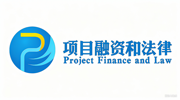Chinese contractors struggling to secure deals in democratic countries to build new Silk Road
Chinese contractors are struggling to secure contracts in democratic countries in Xi Jinping’s efforts to build the “new Silk Road”.
The Belt and Road Initiative (BRI) has been touted as the biggest infrastructure project the world has ever seen and has seen China investing in building rail, road and sea routes for more than 140 countries.
Launched in 2013 by Chinese president Jinping, the majority of planned developments were originally intended to link parts of east Asia with Europe through transport infrastructure. Since then, the scheme has expanded to include many nations in Africa, Oceania and Latin America.
New research from the University of Exeter and Duke Kunshan University in China has revealed Chinese construction and engineering contractors working as part of the BRI face greater challenges in democratic countries.
Closer ties with the United States and the presence of institutions that oppose the initiative in less authoritarian nations has seen business for Chinese contractors take a dramatic hit.
The study, published in International Studies Quarterly, has revealed how Chinese contractors are winning significantly more contracts in countries with more natural resources and that receive more official finance from China.
Research has further shown a significant negative relationship between the presence of democratic institutions in host countries and the values of contracts won by Chinese contractors in those nations.
The study also explains that Chinese infrastructure contractors do significantly less business in countries that are further geographically from China and which are less similar to China in UN voting behaviour. Chinese contractors also appear to do less business in countries receiving less financing from the World Bank. There is also a negative association between NATO membership and contracts won by Chinese contractors.
Construction contracts under the BRI have been often financed through loans provided by Chinese financial institutions or contractors themselves. They are backed by guarantees from the host country’s governments involving natural resources like oil, gas or minerals.
BRI has two intertwined goals of increasing China’s diplomatic reach across the globe while also expanding the presence of Chinese companies overseas. The research states these goals are conflicting as host governments joining the BRI are negatively associated with infrastructure contracts for Chinese companies in those countries as when a country joins the initiative there is more pressure for the contracts to be given to non-Chinese contractors.
University of Exeter lecturer in international relations and co-author of the university’s paper Andrea Ghiselli said: “The aim of China’s Belt and Road initiative is to increase China’s diplomatic clout and expand the presence of Chinese companies overseas. We found these goals conflict when the partner country is a democracy.
“Chinese contractors may be more likely to penetrate the markets of non-democratic countries, thereby increasing the stake of the Chinese government in those countries’ stability by increasing the presence of Chinese citizens and assets.”
Duke Kunshan University lecturer in political science and co-author Pippa Morgan said: “There is a negative relationship between host state democratic institutions and infrastructure contracts won by Chinese firms overseas.
“Democratic institutions allow a mix of domestic and international forces to limit business opportunities for Chinese contractors.
“This is the result of blowback against the BRI within democracies as the joining of the initiative triggers pressure on the executive to limit Chinese involvement in the economy, with unanticipated negative consequences for Chinese contractors.
“Beijing faces an important and unexpected trade-off between diplomatic and economic goals when it comes to persuading a democratic country to join the BRI.
“Even successful diplomatic attempts to foster political and diplomatic alignment cannot offset the negative effects caused by differences in the regime type of the two trading partners.”
China response
The Chinese government indirectly responded to the research by releasing an update on BRI through the publication of Report on the Work of the Government.
It states that 2024 saw the highest BRI productivity ever, with $70.7bn (£54.4bn) dealt in construction contracts and $51bn (£39.3bn) in investments. The report further states that construction contracts continue to be dominated by state-owned enterprises.
Despite this, the government report does highlight how the share of Chinese engagement in the BRI through investments compared to construction dropped in 2024, reaching about 42% of BRI contract and investment engagement compared to 53% in 2023.
Known officially in Chinese as “One Belt, One Road”, the Belt and Road initiative is formed of two overarching corridors of investment. These are the Silk Road Economic Belt, which travels from China to Central and South Asi through the Middle East to Europe, and a sea-based route, the 21st Century Maritime Silk Road, connecting China to Southeast Asia, the Middle East, Africa, and Europe via major sea travel corridors.
Within the Silk Road Economic Belt element of the programme are a number of infrastructure land corridors which intend to be built. These span 60 countries and have been estimated to cost between $4–8 trillion (£3-6 trillion).
These corridors are; the China–Pakistan Economic Corridor, which would see $62bn (£48.2bn) worth of infrastructure projects constructed throughout Pakistan; the New Eurasian Land Bridge, which runs from western China to western Russia through Kazakhstan and includes the Silk Road Railway through China’s Xinjiang Autonomous Region, Kazakhstan, Russia, Belarus, Poland and Germany; the China–Mongolia–Russia Economic Corridor; the China–Central Asia–West Asia Corridor; the China-Indochina Peninsula economic corridor and the Trans-Himalayan Multi-dimensional Connectivity Network.
At the end of last year, China’s vision of building the “new Silk Road” took a big hit as Brazil became the third country to pull out of the multi-trillion dollar infrastructure project.







